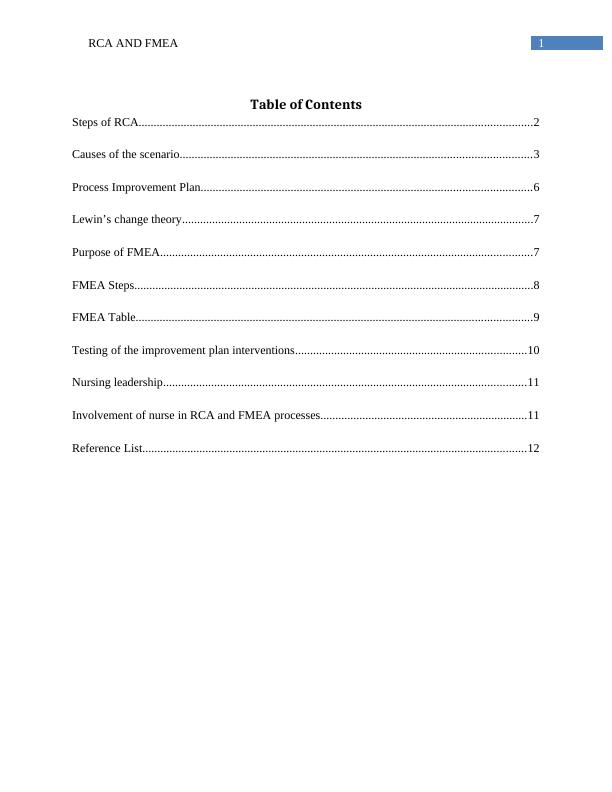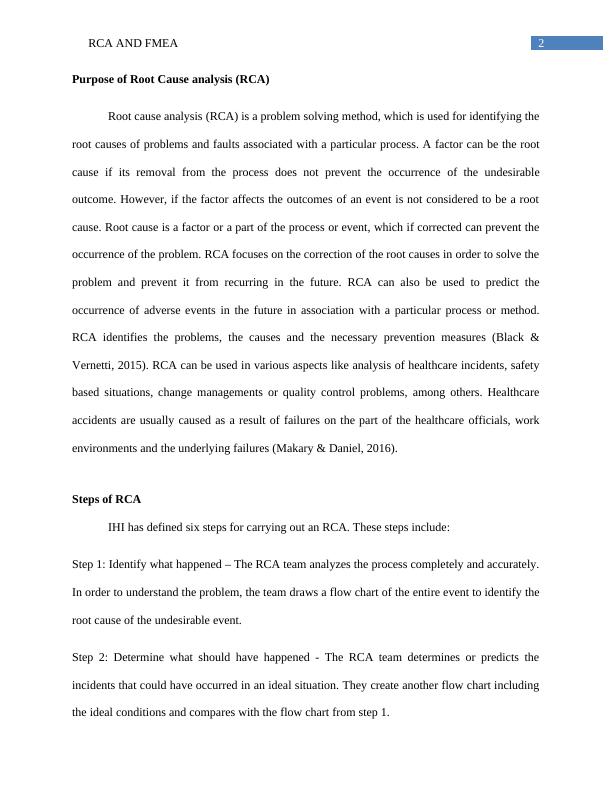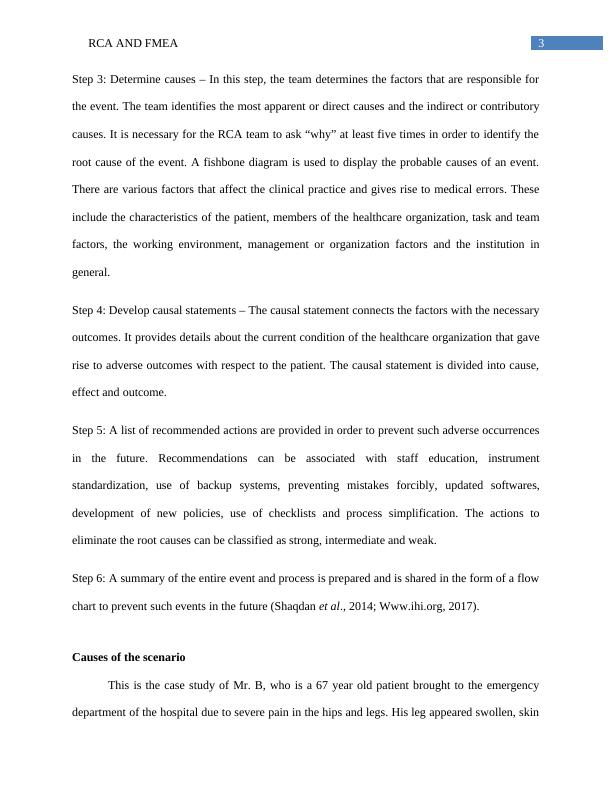(Solved) RCA and FMEA - Assignment
16 Pages4492 Words123 Views
Institute for Healthcare Improvement
Added on 2020-04-15
(Solved) RCA and FMEA - Assignment
Institute for Healthcare Improvement
Added on 2020-04-15
ShareRelated Documents
Running head: RCA and FMEARCA AND FMEAName of the StudentName of the UniversityAuthor Note

1RCA AND FMEATable of ContentsSteps of RCA...................................................................................................................................2Causes of the scenario.....................................................................................................................3Process Improvement Plan..............................................................................................................6Lewin’s change theory.....................................................................................................................7Purpose of FMEA............................................................................................................................7FMEA Steps.....................................................................................................................................8FMEA Table....................................................................................................................................9Testing of the improvement plan interventions.............................................................................10Nursing leadership.........................................................................................................................11Involvement of nurse in RCA and FMEA processes.....................................................................11Reference List................................................................................................................................12

2RCA AND FMEAPurpose of Root Cause analysis (RCA)Root cause analysis (RCA) is a problem solving method, which is used for identifying theroot causes of problems and faults associated with a particular process. A factor can be the rootcause if its removal from the process does not prevent the occurrence of the undesirableoutcome. However, if the factor affects the outcomes of an event is not considered to be a rootcause. Root cause is a factor or a part of the process or event, which if corrected can prevent theoccurrence of the problem. RCA focuses on the correction of the root causes in order to solve theproblem and prevent it from recurring in the future. RCA can also be used to predict theoccurrence of adverse events in the future in association with a particular process or method.RCA identifies the problems, the causes and the necessary prevention measures (Black &Vernetti, 2015). RCA can be used in various aspects like analysis of healthcare incidents, safetybased situations, change managements or quality control problems, among others. Healthcareaccidents are usually caused as a result of failures on the part of the healthcare officials, workenvironments and the underlying failures (Makary & Daniel, 2016). Steps of RCAIHI has defined six steps for carrying out an RCA. These steps include:Step 1: Identify what happened – The RCA team analyzes the process completely and accurately.In order to understand the problem, the team draws a flow chart of the entire event to identify theroot cause of the undesirable event. Step 2: Determine what should have happened - The RCA team determines or predicts theincidents that could have occurred in an ideal situation. They create another flow chart includingthe ideal conditions and compares with the flow chart from step 1.

3RCA AND FMEAStep 3: Determine causes – In this step, the team determines the factors that are responsible forthe event. The team identifies the most apparent or direct causes and the indirect or contributorycauses. It is necessary for the RCA team to ask “why” at least five times in order to identify theroot cause of the event. A fishbone diagram is used to display the probable causes of an event.There are various factors that affect the clinical practice and gives rise to medical errors. Theseinclude the characteristics of the patient, members of the healthcare organization, task and teamfactors, the working environment, management or organization factors and the institution ingeneral. Step 4: Develop causal statements – The causal statement connects the factors with the necessaryoutcomes. It provides details about the current condition of the healthcare organization that gaverise to adverse outcomes with respect to the patient. The causal statement is divided into cause,effect and outcome. Step 5: A list of recommended actions are provided in order to prevent such adverse occurrencesin the future. Recommendations can be associated with staff education, instrumentstandardization, use of backup systems, preventing mistakes forcibly, updated softwares,development of new policies, use of checklists and process simplification. The actions toeliminate the root causes can be classified as strong, intermediate and weak. Step 6: A summary of the entire event and process is prepared and is shared in the form of a flowchart to prevent such events in the future (Shaqdan et al., 2014; Www.ihi.org, 2017). Causes of the scenarioThis is the case study of Mr. B, who is a 67 year old patient brought to the emergencydepartment of the hospital due to severe pain in the hips and legs. His leg appeared swollen, skin

End of preview
Want to access all the pages? Upload your documents or become a member.
Related Documents
RCA and FMEA a Scenario Analysislg...
|10
|3583
|271
RCA and FMEA: Improving Patient Outcomes and Quality Carelg...
|14
|2523
|408
Root Cause Analysis and Process Improvement Plan in Healthcarelg...
|11
|2149
|448
Organizational Systems and Quality Leadershiplg...
|9
|2089
|226
Introduction to Patient Safety | Studylg...
|5
|1063
|21
Case Study Analysis of Nurses SENSITIVE INDICATORS Name of the University Author(s)lg...
|7
|951
|400
